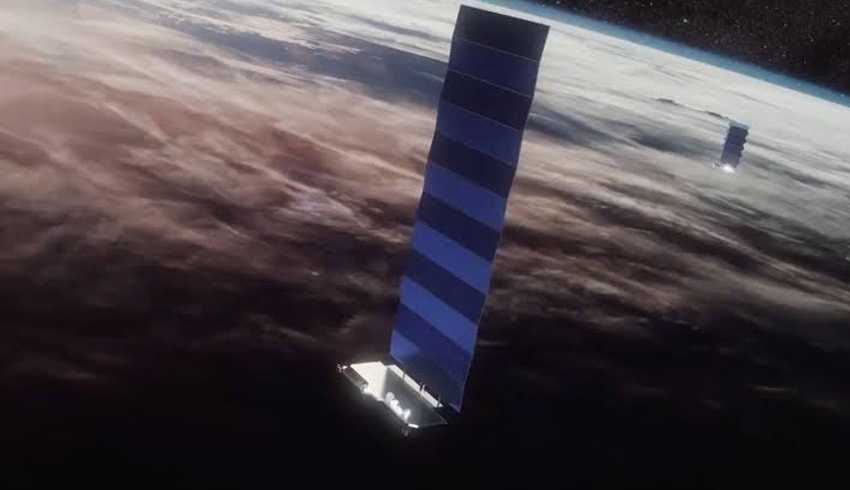More are to come with SpaceX proposing to launch batches of 60 satellites twice every month for the rest of this year.
This latest launch was delayed a for week because of poor weather but lifted off from Cape Canaveral aboard a SpaceX Falcon 9 rocket on Wednesday.
Satellites were deployed to orbit at around 300 kilometres. Once checked out, they will be lifted to their 550-kilometre operational orbit.
Any that don’t check out will be left in the lower orbit to eventually de-orbit and burn up after a few months.
Satellites in this launch differed from earlier versions, with upgrades for greater spectral efficiency. They are also larger, each massing around 260 kilograms, against 227 kilograms for satellites launches last year.
The newest satellites also have four phased array antennas. SpaceX said that earlier satellites had multiple antennas without giving a number.
SpaceX also says the new satellites are fully demisable, meaning they will completely burn up in the Earth’s atmosphere on de-orbit. Earlier versions were described as 95 per cent demisable, meaning some components could survive re-entry and reach the Earth.
As with earlier launches, SpaceX recovered rocket components for reuse.
The first stage booster successfully landed on the SpaceX drone ship 'Of Course I Still Love You' out in the Atlantic Ocean. That was its third mission.
SpaceX also recovered a payload fairing half which landed on Ms Tree, a boat equipped with a large net. A second fairing half missed its recovery boat Ms Chief but was recovered from the water for possible reuse.
SpaceX acknowledged that some 10 of the earlier Starlink satellites had not elevated to higher orbit. Those were spotted by an astronomer at the Harvard-Smithsonian Center for Astrophysics who tracks satellite movements.
SpaceX spokesman James Gleeson said the company was performing a controlled de-orbit of several first iteration satellites using their onboard propulsion.
“While these satellites are operable and capable of providing service, the second iteration of Starlink satellites that SpaceX has started to deploy provide better spectrum efficiency, more capacity and optimised service to the end user,” he said.
Musk’s vision is for a constellation of as many as 12,000 satellites, providing low cost global broadband services. He said last year that Starlink would be economically viable with 1,000 satellites, with additional satellites to meet customer demand.
SpaceX plans to keep each satellite operational for four to five years, at which time they would be de-orbited and replaced with more capable models.

